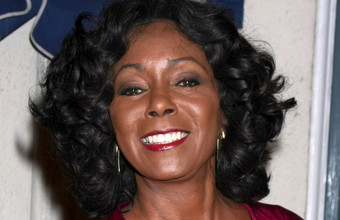HELLO AMERICA!—It is always gratifying to catch up with old friends especially in Hollywood and actress Judy Pace is one of those. Even though I first attended U.S.C., I also realized what a top notch school for the theatre Los Angeles City College was and quickly registered in a few classes. That’s when I met Judy who was absolutely special and quite beautiful. It didn’t take long before she was snagged for the prestigious Ebony Fashion Fair. She became the youngest model for the show. It was, of course, something quite new and adventurous for her, but she went on to model in many leading publications that catered to both black and white audiences.
Because of the times, Judy had no aspirations to become a film star but when William Castle another friend of mine, by the way, spotted her photos in “Ebony” magazine he chose her for a role in his film, “13 Frightened Girls” (1963). She received great reviews and displayed great potential as an actress. “I suddenly realized that I was meant to be an actress,” she said.
“And [I] decided to take acting classes and auditioning for any role possible in the L.A. theatre scene. And I was lucky to be accepted for a wonderful play The Attic in which I played one of the three female leads who band together to turn the tables on a white gigolo by loving him to death.”
Judy was so dramatically effective critics noted that she played her role so daringly and erotically that one forgot her race, color and utterly hypnotized the audience with her powerful aura. “Actors understand or know when they have come home,” Judy makes quite clear. “When you hit truth it is a powerful force because it claims or touches your entire being. It’s a kind of reality which is utterly special and you feel it in the center of your soul and nothing can be it. It’s like participating in a race or sport, you know when you’ve crossed the line successfully or landed the ball in the appropriate place establishing that you’ve won the game. Hey! It’s one exciting experience but it takes work like anything else to make it happen. And that’s a reality as well!”
Even though Judy lost out to Diahann Carroll for the lead in “Julia” (1968), she believed was perfect for her, she found success in the nighttime soap “Peyton Place.” She created the role of “Vickie Fletcher”, TVs first black female antagonist. “I had a ball playing the manipulative, cheating, backstabber who ruins the life of everyone who crosses her path. After all before then no other actress of color had been given such a challenge, so again I was very lucky.”
From then on the rest is history, she was signed for the hit series “The Young Lawyers,” she was referred to as “The Black Babydoll” or “The Black Barbie” because she was so vivacious and beautiful. She quickly became the ultimate favorite of the 1970s on the big and little screens. Blaxploitation films such as “Cotton Comes to Harlem,” “The Black King” which starred Godfrey Cambridge, Raymond St. Jacques, Redd Foxx, Calvin Lockhart, Cleavon Little and Ossie Davis.
Judy went on to conquer Las Vegas and starred in “Guys and Dolls,” a production I viewed which she played the role of “Adelaide.” The audience loved her and the all black version of the show. Throughout her career Judy broke the color line in TV and in films. Not many, as of yet, have filled her shoes. She was special then and she is definitely special now.





